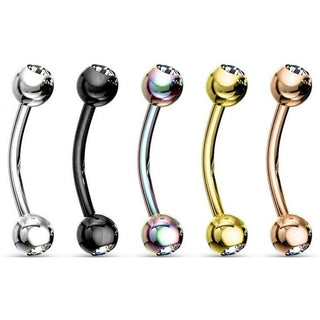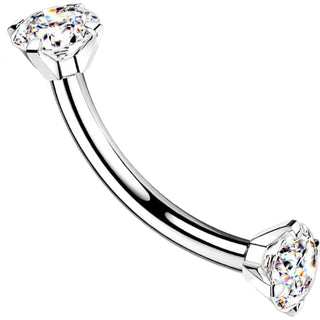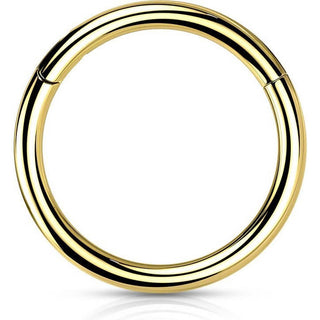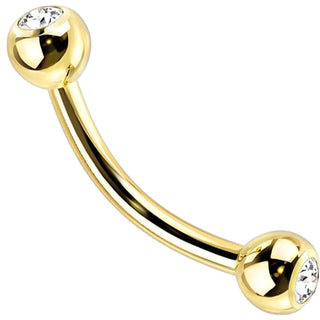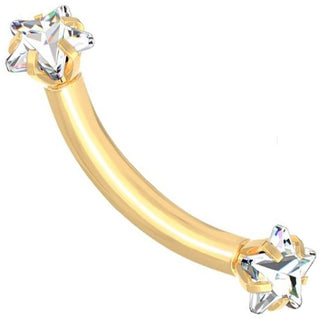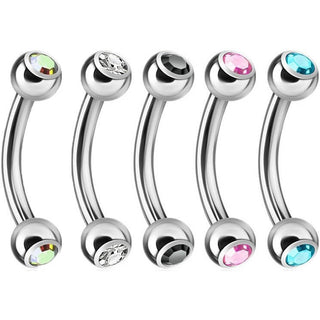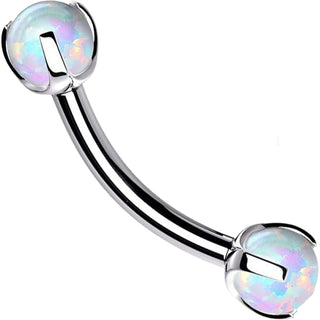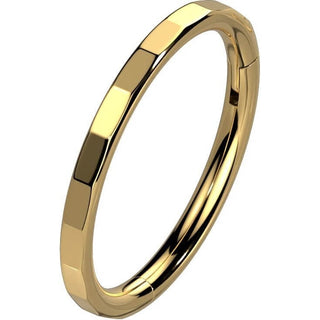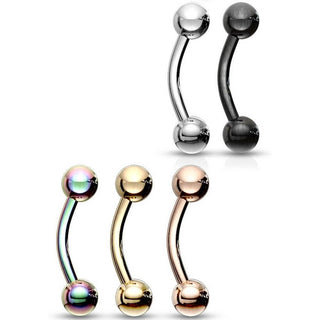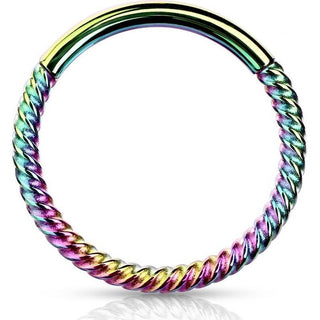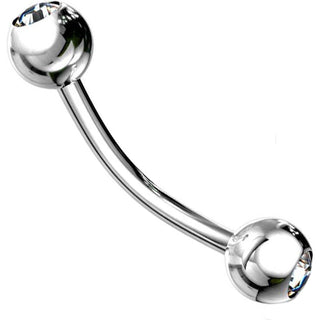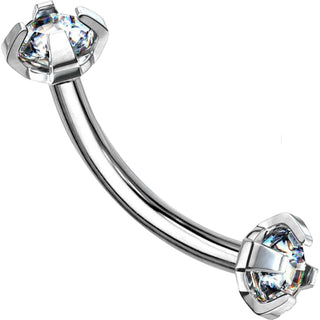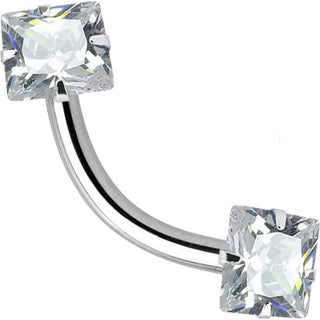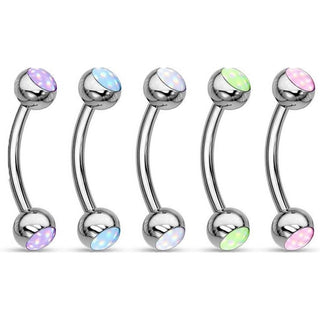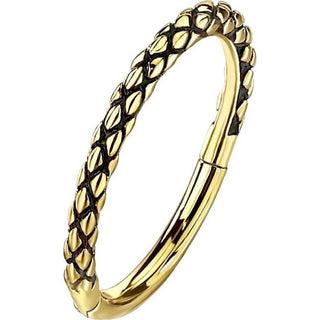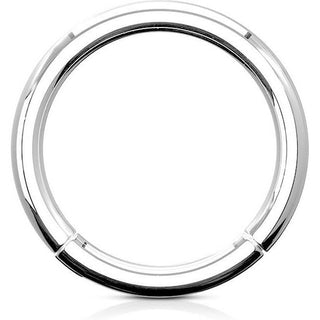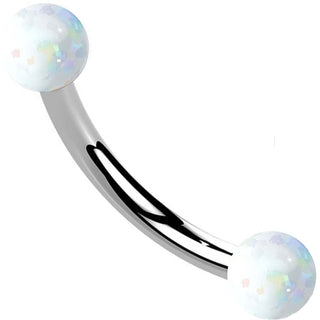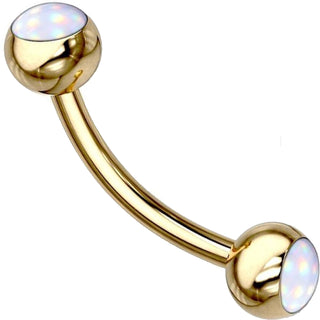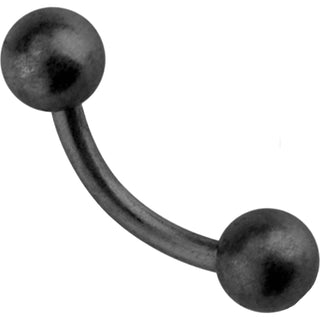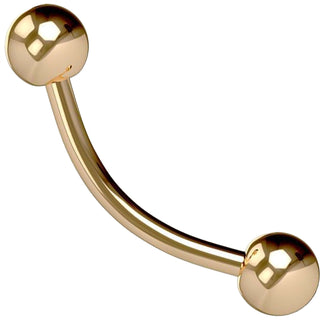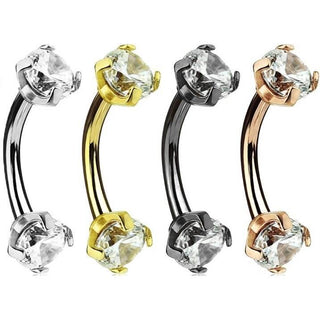Eskimo Piercing
Discover over 50 unique Eskimo Piercing collections at our shop! Crafted from Titanium, 316L Surgical Steel, and other quality materials. Enjoy great prices and excellent customer service.
Buy Eskimo Piercing
In our piercing shop you will find a large selection of Eskimo Piercing for the lower lip. Mostly a Curved Barbell Piercing (banana piercing) is used, so that your piercing is visible on the upper and lower lip.
We offer Eskimo piercings in all desired materials, colours, shapes and sizes. The most common Piercings by Material are surgical steel and titanium. The most commonly worn colour is silver Eskimo piercings, followed by gold and other colours such as rose gold, green or blue. Most Eskimo piercings have a bar thickness of 1.2 and 1.6 mm and a length of 8, 10 or 12 mm. In addition to classic jewellery, you can also opt for fancy models that have not only spikes or balls but also zirconia, for example.
Because the Eskimo piercing is pierced from top to bottom through the lip, it is also called a vertical labret.
Eskimo Piercing Guide
An Eskimo Piercing, often mistaken for the vertical labret, is a unique lip piercing that enters through the center bottom lip and exits out of the center top lip.
Popular for its distinct placement, it enhances facial aesthetics by drawing attention to the mouth. Browse our collection to find high-quality jewelry specifically designed for your Eskimo piercing needs.
Eskimo Piercing jewelry
The Eskimo piercing, due to its unique placement, requires specific types of jewelry to ensure a proper fit, comfort, and appeal. The most suitable types of jewelry for an Eskimo piercing are:
- Curved Barbell Piercing: This is the most commonly used jewelry for an Eskimo piercing. Its curvature complements the piercing's natural trajectory. The two beads or decorative ends of the curved barbell can be seen on the top and bottom center of the lip, giving it a distinctive appearance.
- L-bend Barbell: Sometimes preferred for its slightly different angle, the L-bend barbell can offer a snug fit for some individuals. This type of jewelry has a straight section that goes inside the piercing and a shorter, bent section that lies flat against the inner mouth or lip.
- Horseshoe Piercing: Circular Barbell Piercings can also be used for Eskimo piercings, especially during the initial healing process or if someone desires a different look. The ends of the circular barbell will protrude from the top and bottom of the lip similar to the curved barbell.
It's essential to select the correct gauge and length for your Eskimo piercing jewelry. Proper sizing ensures the piercing heals well and reduces the risk of complications. Always consult with a professional piercer to get recommendations on the best jewelry choices for your individual anatomy and healing process.
Eskimo Piercing Materials
When considering jewelry for piercings, especially for fresh ones, it's essential to select materials that are hypoallergenic, non-porous, and can resist bacteria to ensure safe and healthy healing. Suitable Materials are:
- Surgical Steel Piercing: One of the most common materials used for body jewelry, it's hypoallergenic for most people and doesn't corrode easily. In case of nickle allergy we recommend Titanium instead.
- Titanium Piercing: Lighter than stainless steel and virtually free from impurities, titanium is a hypoallergenic material that doesn't react with human tissue, making it ideal for those with metal sensitivities.
- 14k or 18k Gold Piercing (Yellow, White, or Rose): Very high value pieces with good bio-compability.
- Acrylic, PTFE (Polytetrafluoroethylene) or Bioflex Piercing: These are types of biocompatible plastics often used in body jewelry, especially for those who have metal allergies or for piercings that might need flexibility.
Eskimo Piercing Procedure
The Eskimo piercing is unique in its placement, and its procedure, pain level, and healing time can be distinct from other types of lip piercings.
- The piercing area is first cleaned and sterilized.
- The piercer will mark the entry and exit points with a surgical marker.
- Using a hollow, sterilized needle, the piercer will puncture the skin, starting from inside the mouth and exiting through the top of the lower lip.
- Once the needle is through, the jewelry (typically a curved barbell) is inserted.
- The area is cleaned again, and aftercare instructions are provided.
Eskimo Piercing Pain Level
The pain level for any piercing varies greatly from person to person based on individual pain tolerance. Generally, lip piercings, including the Eskimo piercing, can be described as a sharp pinch followed by a burning or throbbing sensation. The actual piercing procedure is relatively quick, so the discomfort is short-lived. Some people compare the pain to biting one's lip accidentally.
Eskimo Piercing Healing and aftercare
Initial Healing: The outer wound might seem healed within 2-4 weeks. During this period, swelling, redness, and some discharge are common.
Complete Healing: Internally, the piercing can take anywhere from 2 to 6 months to fully heal. Some individuals may take longer based on their body's healing response.
To ensure a smooth healing process:
- Always maintain good oral hygiene.
- Rinse your mouth with a non-alcoholic, saline-based mouthwash after meals.
- Clean the external part of the piercing with a saline solution.
- Avoid playing with the jewelry.
- Refrain from consuming spicy foods, alcohol, or hot beverages in the early stages of healing as they can irritate the piercing.
- Avoid swimming in pools or open water to prevent potential infections.
As with any piercing, it's essential to consult with a professional piercer before getting an Eskimo piercing. They can provide guidance, answer questions, and ensure the procedure is done safely and hygienically.


